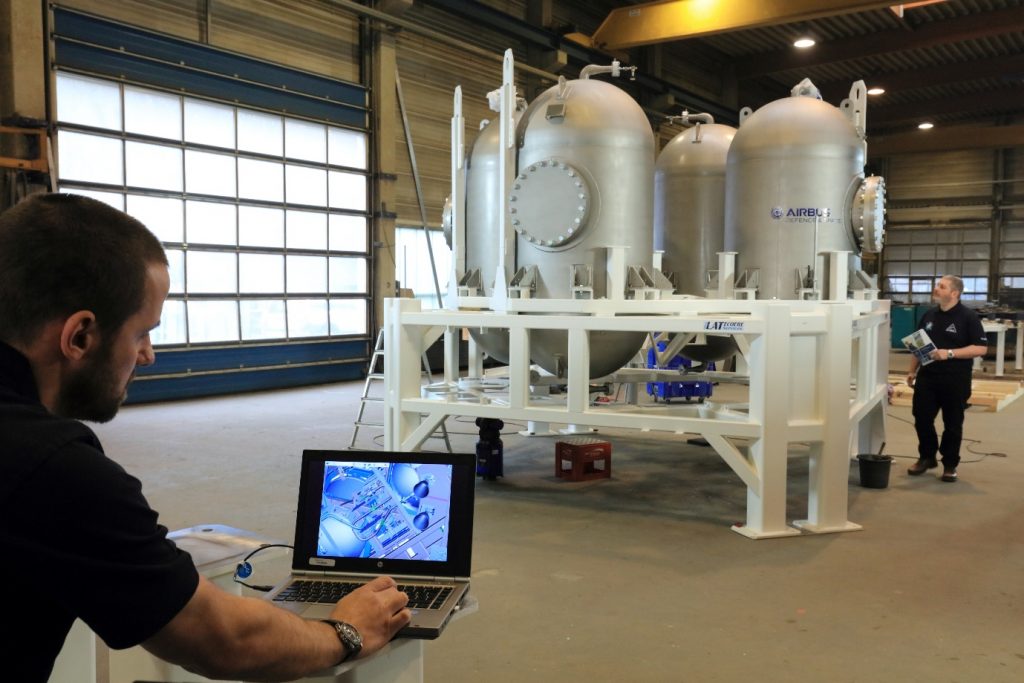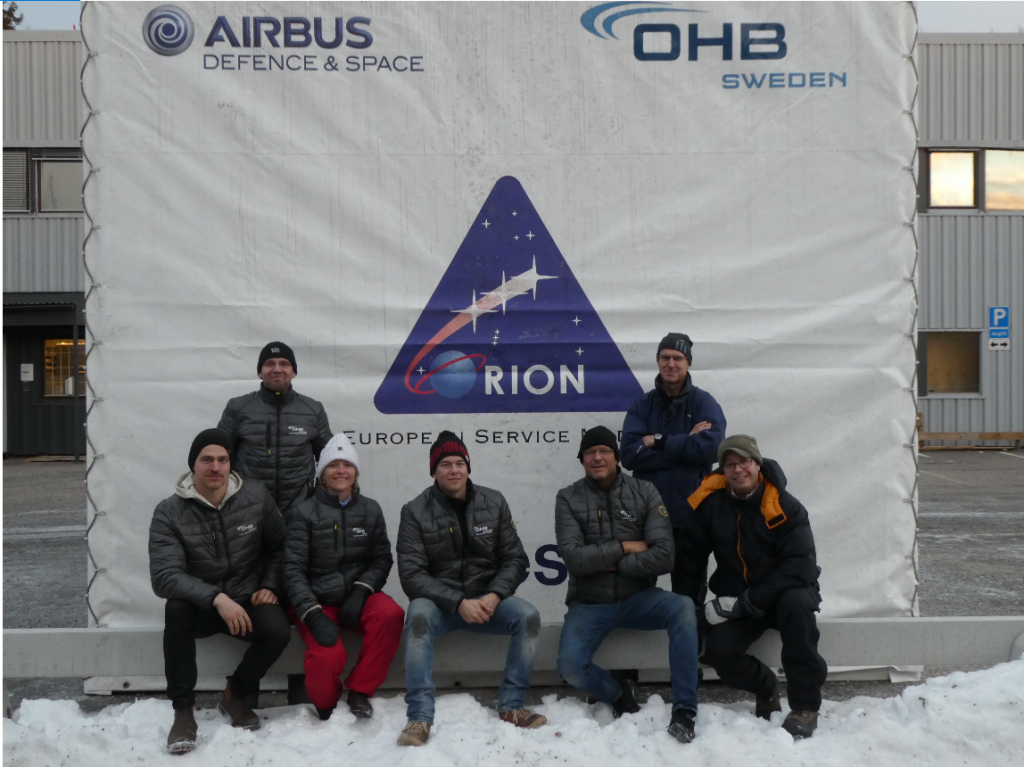As we progress through the countries that have contributed hardware or services to build the European Service Modules for the Artemis missions we arrive at Sweden. Sweden has a unique contribution as their hardware will not fly, but it is nevertheless instrumental in building and preparing the Artemis missions!
OHB Sweden based near Stockholm designed and built the Propulsion Qualification Model for the European Service Modules. This rig was made to have working hardware that could be used, tested and to gain operational insights on the actual spacecraft.

Although the model is fully-functioning in the sense that it uses real space-certified engines and they are fired up regularly, the structure stays firmly anchored to the ground – except when lifted by crane for transport from Sweden to NASA’s testing facility in White Sands in New Mexico, USA.
With the European Service Module proudly having 33 engines of three different types, there is a lot to test and fine tune. The Propulsion Qualification Module was completed in Sweden in 2016 and formally handed over to NASA for testing in 2020.

We covered its history in a detailed blog post here, and had a technical look at the model in this blog entry. As a star element of the construction and design of the European Service Modules (and possibly because it involves turning on the engines with eye-catching flames) we have featured the Propuslion Qualification Module many times.

 Automated Transfer Vehicle page
Automated Transfer Vehicle page ATV blog archive
ATV blog archive
Discussion: 2 comments
Lots of flame around, after the 5sec burn, a bit worrying it should shut off instantly. Surely..?
Good question! Please forgive that it took so long to find an answer. Straight from the propulsion experts: The perceived non-instant shutoff is due to gravity! In this test-configuration the fuel flows somewhat longer and continues to burn, this will not happen in space, and the flames seen are an expected by-product of testing spacecraft on Earth. The absence of vacuum at the test bench also prolongs this.